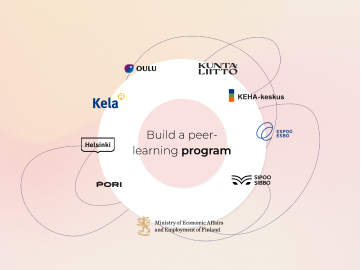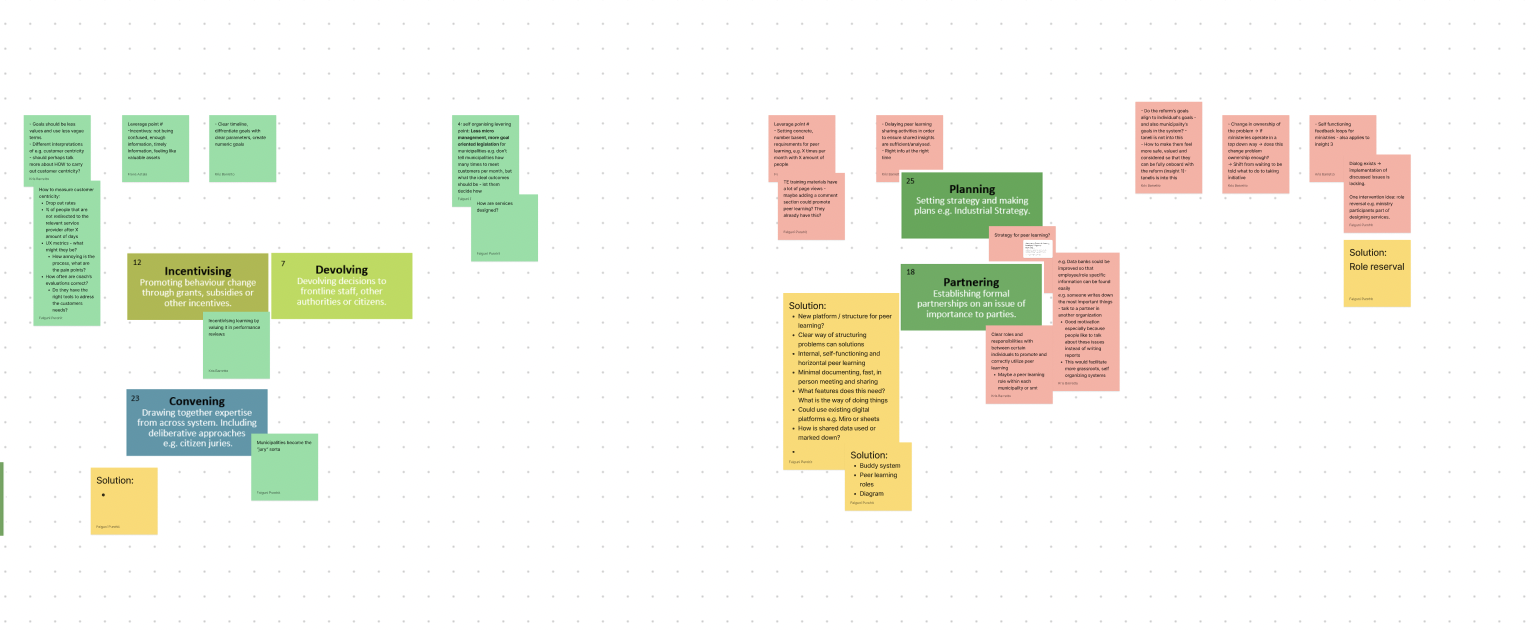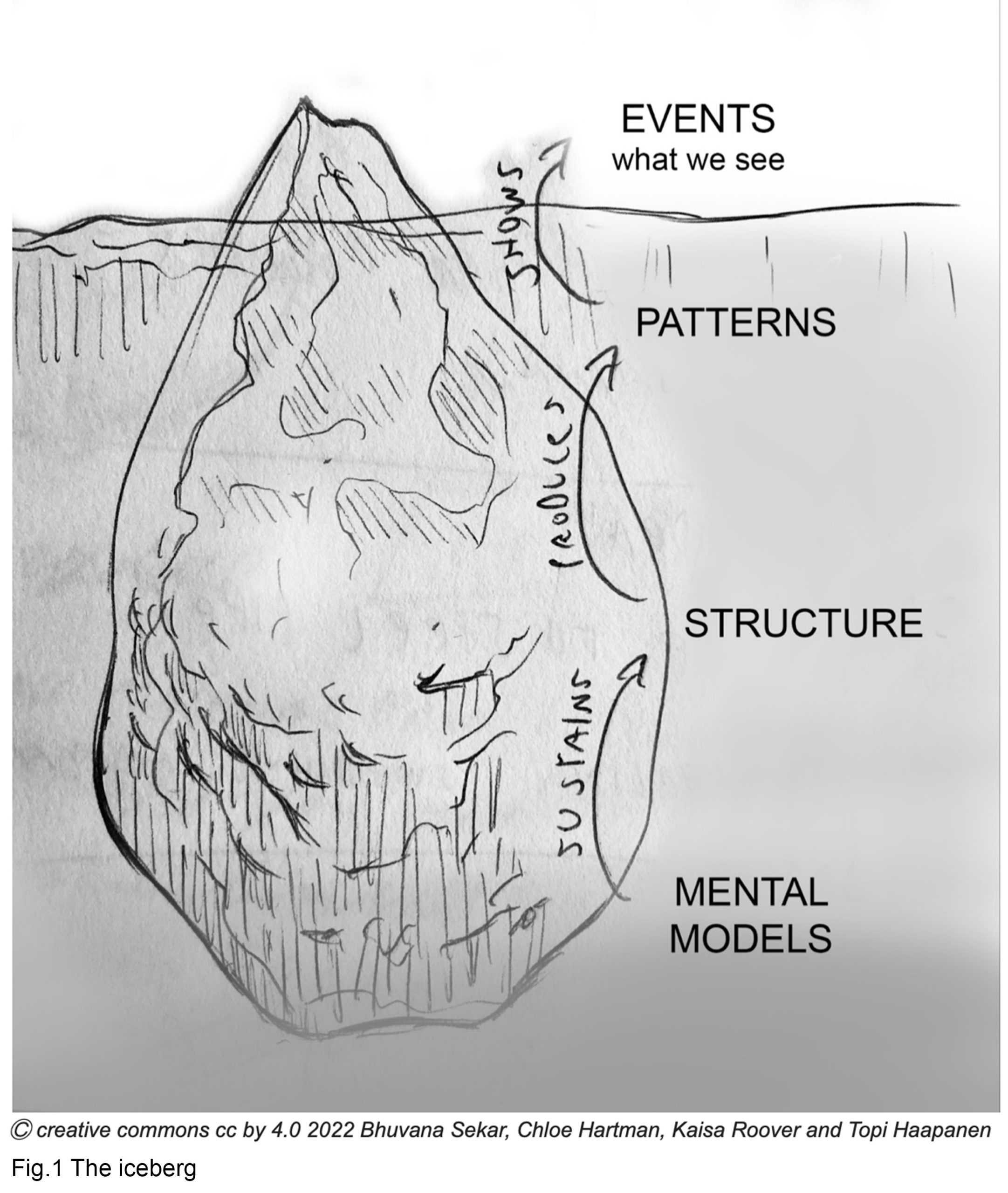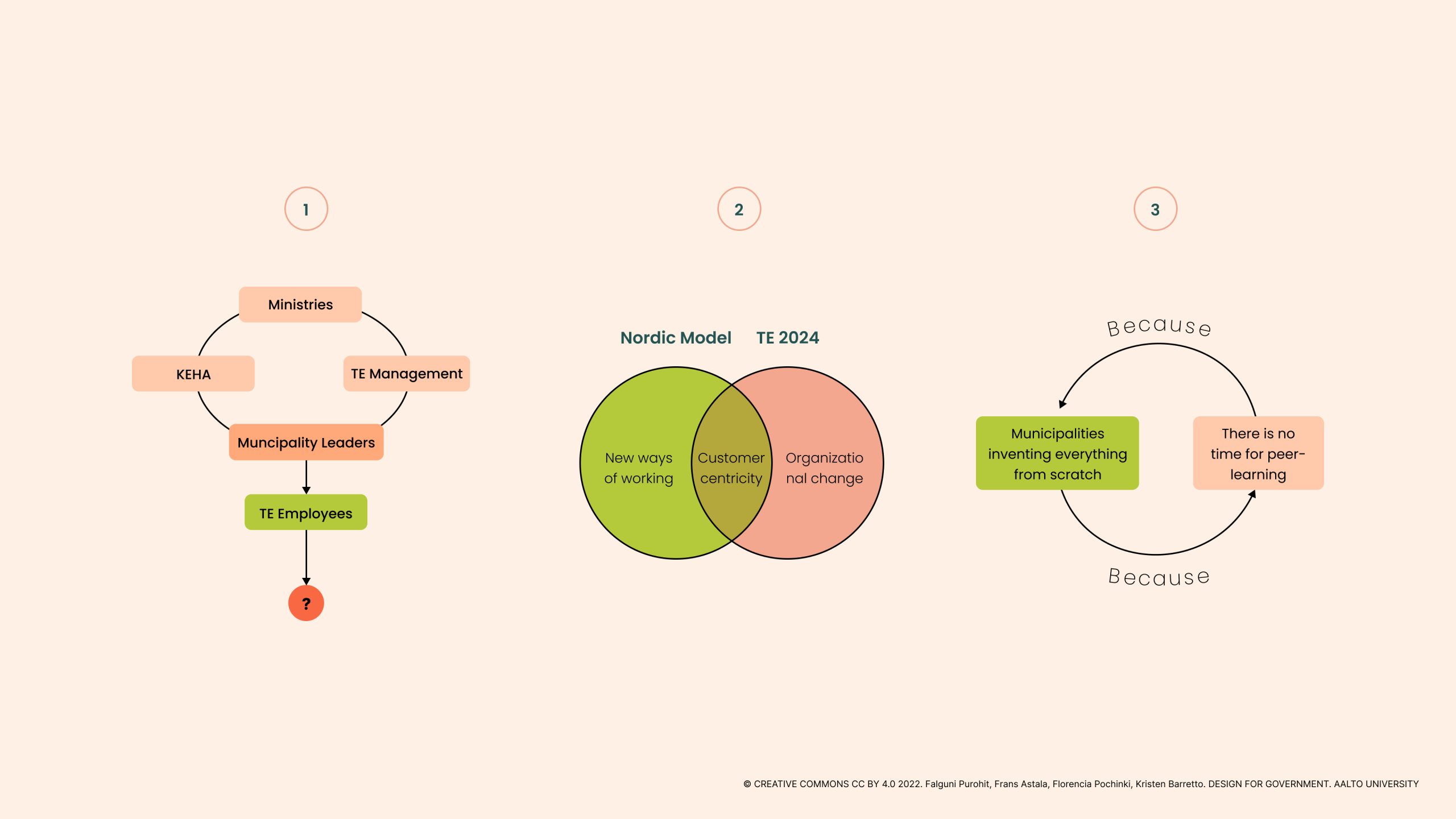Building an actionable case for peer learning
We will take you along the final stretch of our design process where we synthesise our research into an actionable government proposal. We present our solution as a proposal for The Ministry of Employment and Economic Affairs to form a working group and collaboratively design a peer learning program with the help of our design tool.










